Where my heart is
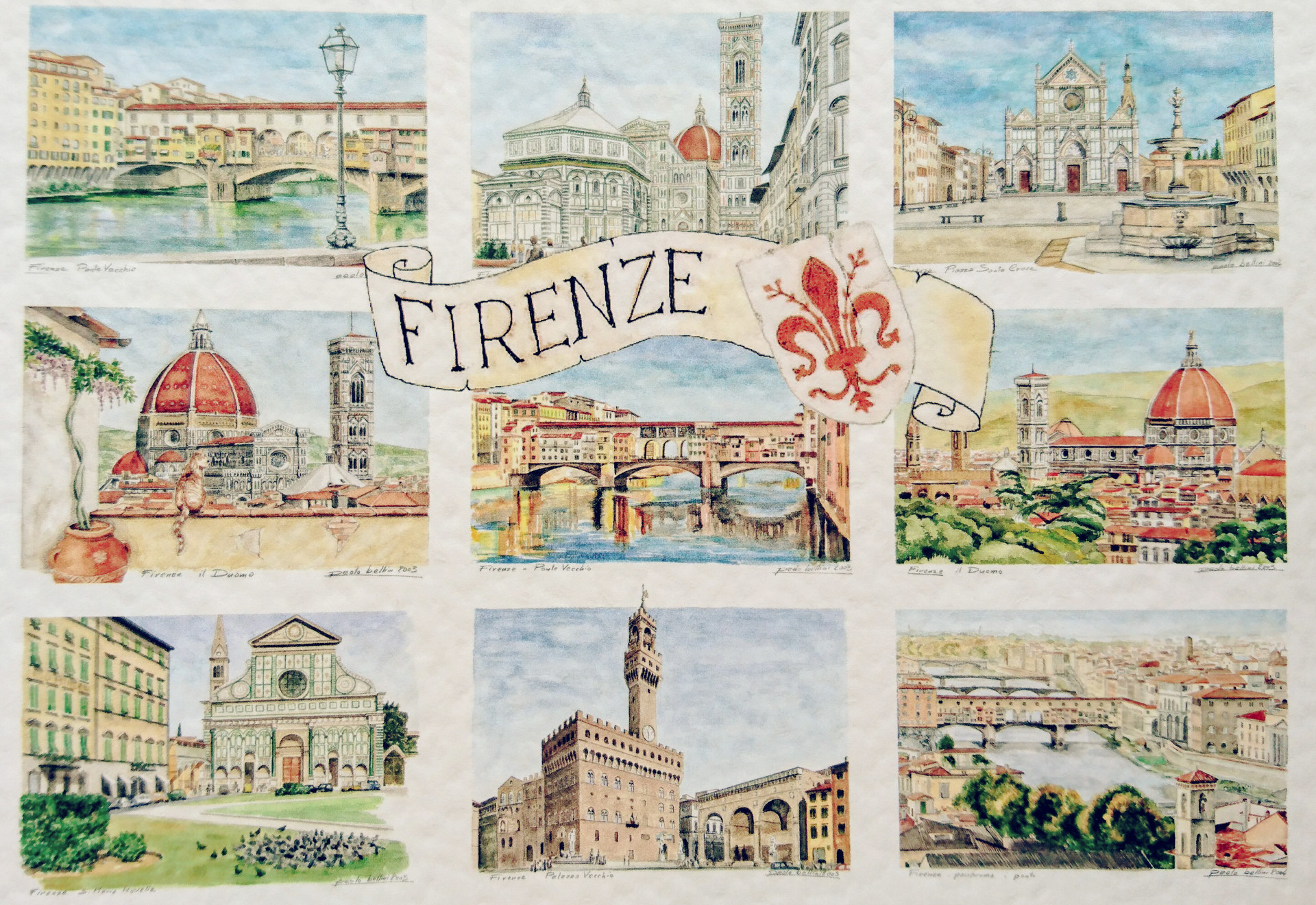
I am comfortable with walking among Renaissance works, that's my heaven and I create my inner happiness feeding my eyes and mind with such works of art. Describing happiness in words is not that difficult, I believe the hardest thing is to calm down your heart when you have to deal with so much excitement in a place you love to be!
This is my favorite subject, the mother of a new era and the smile of a reborn art!
My first visit was in April when I feed my curiosity and I visited some of its monuments; then I came back for the painting course "Paint like Botticelli" and again to have a walk around and refill myself with the city's joy.
In general, I can say about Florence that is a vivid Italian city, capital of the region of Tuscany. According to the Encyclopædia Britannica, it was politically, economically, and culturally one of the most important cities in Europe and the world from the 14th to 16th centuries. Furthermore, this city is the home of history's most important noble families, de' Medici.
My list includes a museum, Museo Galilei, a palace, Palazzo Vecchio, two beautiful squares and also two important churches, the Santa Maria Maggiore and Santa Maria Novella.
I want to change the order and start with something I didn't mention above, and then with the first monument that you can see after getting out from the train station with the same name, Chiesa di Santa Maria Maggiore.
So my first subject will be Cappella del Palazzo del Bargello
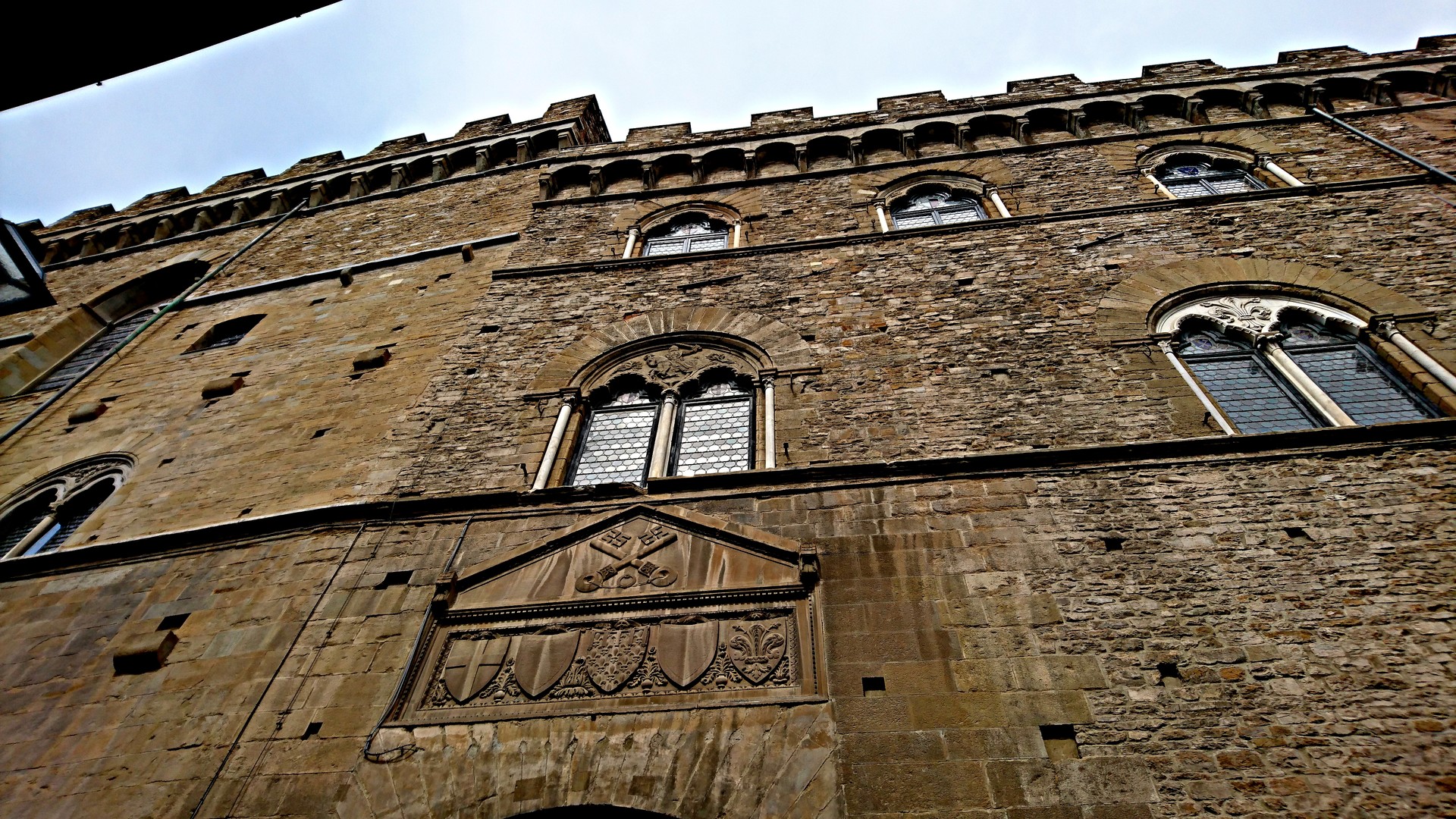
- on the first floor of the XIII century Bargello, there is the Chapel of Santa Maria Maddalena, where those condemned to death spent some time being comforted by members of the Compagnia dei Neri, before setting out on their journey to the scaffold
- this custom helps to explain the frescoes - c. 1340 - attributed to the workshop of Giotto, as they portray shining examples of penitents and redeemed sinners: "Scene from the lives of St. Mary of Egypt and St. Mary Magdalen", as well as "Scene from the life of the Baptist"; on the entrance wall is "Hell", and on the end wall is "Paradise"
- among the Elect is the poet, Dante, clutching a copy of his "Divine Comedy"
- the chapel is adorned with precious paintings, furnishings and liturgical objects
Now, the two churches which are not so close one to another, but as beautiful and spectacular as two open hands to the sky!
Chiesa di Santa Maria Novella
- the first great basilica in Florence, and is the city's principal Dominican church
The interior and history are available here but I will mark some important details here as well.

- this church was called Novella (New) because it was built on the site of the 9th-century oratory of Santa Maria delle Vigne; when the site was assigned to Dominican Order in 1221, they decided to build a new church and adjoining cloister; the church was designed by two Dominican friars, Fra Sisto Fiorentino and Fra Ristoro da Campi; building began in the mid-13th century
- the vast interior is based on a basilica plan, designed as a Latin cross, and is divided into a nave, two aisles with stained-glass windows and a short transept
- Giorgio Vasari was the architect, commissioned in 1567 by Grand Duke Cosimo I
Inside, the church hosts works of art with historical importance to us, normal tourists, or to religious tourists or people that come with a mix of curiosities.

This one above is called Altare dei Santi Cosma e Damiano, realized in 1568.

A collage which includes the Coronation of the Vergin by Andrea di Bonaiuto and Umiliati Friars, from 1365; the vivid Nativity by the well-known artist Sandro Botticelli from 1475; the Annunciation by Santi di Tito, 1592 and last but not least, again the Annunciation, but this time Pietro di Miniato is the admirable artist, 1336-1450 (this detailed painting took more than a century).

The painting illustrates us the San Vicenzo Ferreri preaching, Iacopo Coppi called Il Meglio from 1573-1574.
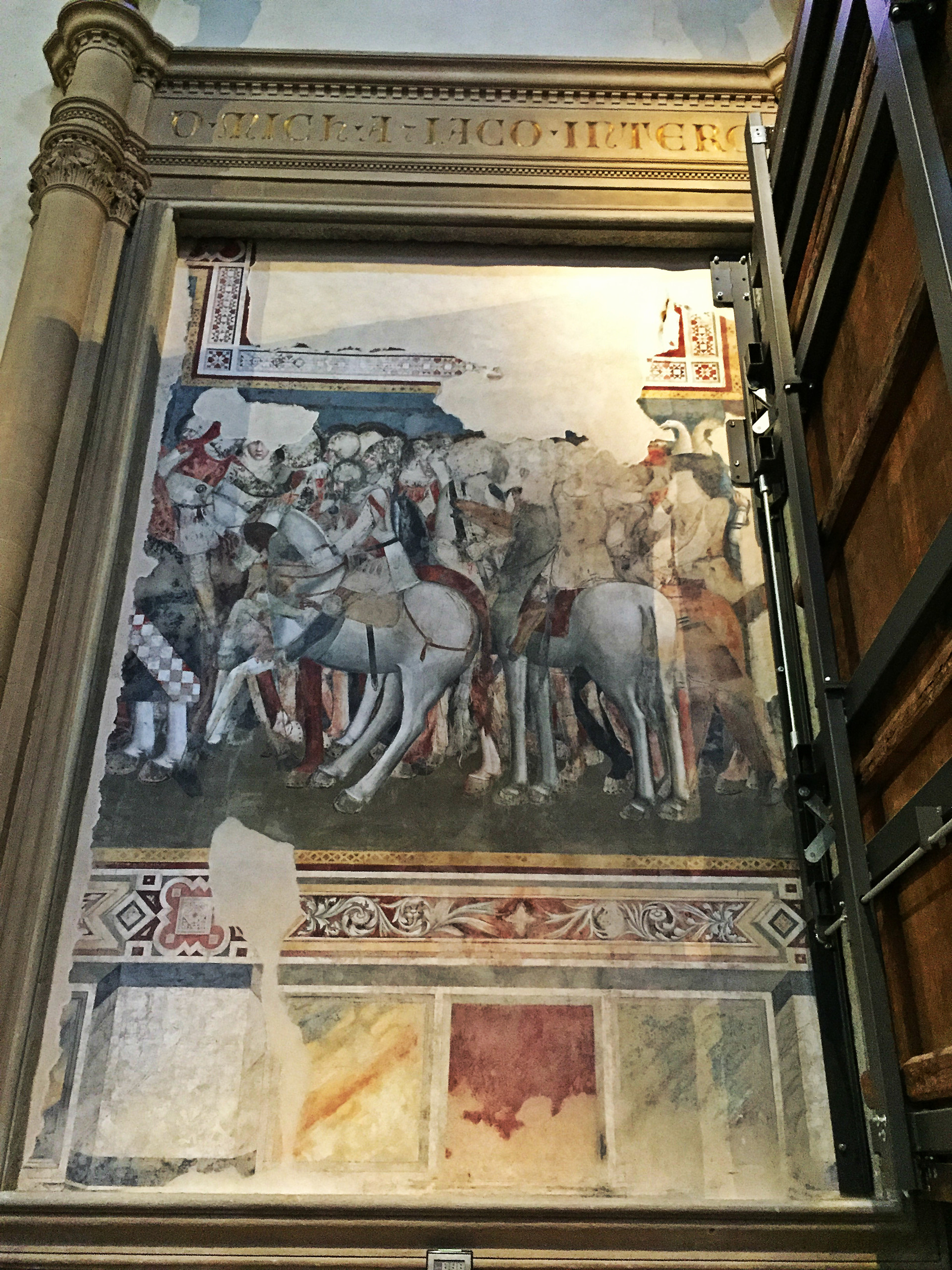
The Theban Legion (about 1315-1320) by Burno di Giovanni;
This represents a mural fresco and mural secco painting with tin foil applications, silver, and gold to the armor of knights and harness horses.
It was found in 2008, and one year later its restoration began (2009-2011 restoration)
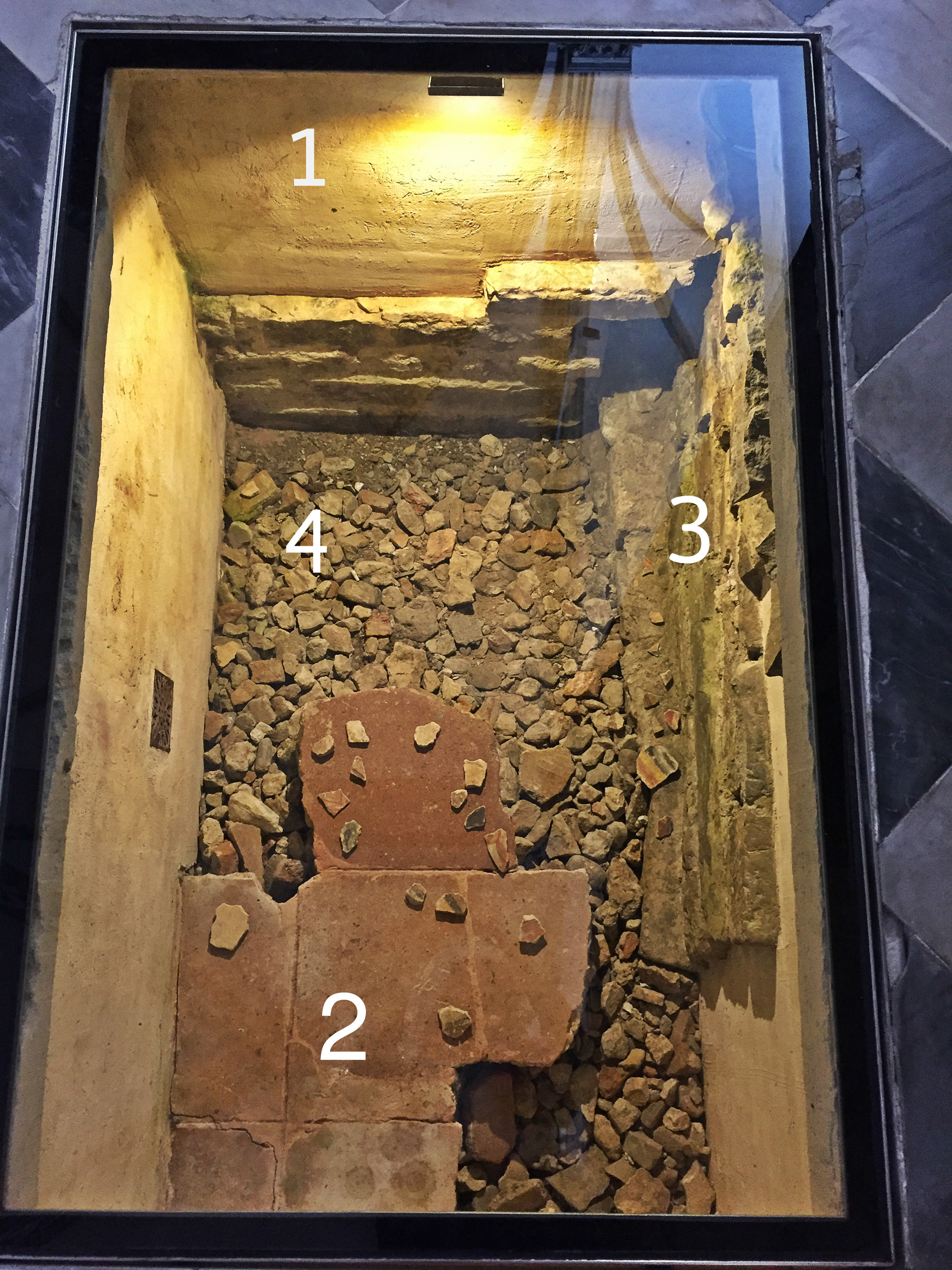
Here we can observe a few traces of the second church structure, consecrated on the 30th of October 1094. The first church was a simple chapel, documented from 983 AD, built on the site of the first chapter, in the area currently called the Spanish Chapter. As showed by the worksite, the second church was aligned in the East-West direction and pretty same place of the current sacristy. Its facade faced East and looked out to the old Santa Maria Novella square, which is known today as Piazza dell'Unita d'Italia. The church was initially under the patronage of Santa Maria del Fiore Dome's canons until 1221 when it becomes a Dominican church. In 1246, after the transition, the monks began the construction of the third church, based in the same place of the current apse.
Because of the works for the new church, which was built on the North-SOuth axis, the second church was almost completely dismantled and the third building also integrated some elements of the current sacristy and crypt.
The excavation also brought to light a segment of the northern wall built in 1094; it was demolished down to the floor level giving place to one of the biggest pillars foundations plinths. The latest excavation has also shown a section of the second church's floor, made of "cicciopesto", a very resistant and waterproof material, which is composed of little pieces of bricks knead with lime.
- I put some numbers on the picture to show you the meaning of each part that has a detail to be exposed.
1. Wall of the 1094's church
2. Floor made in "cocciopesto"
3. Pillars foundation plinth
4. Plasterwork's fragments of the 1094's church
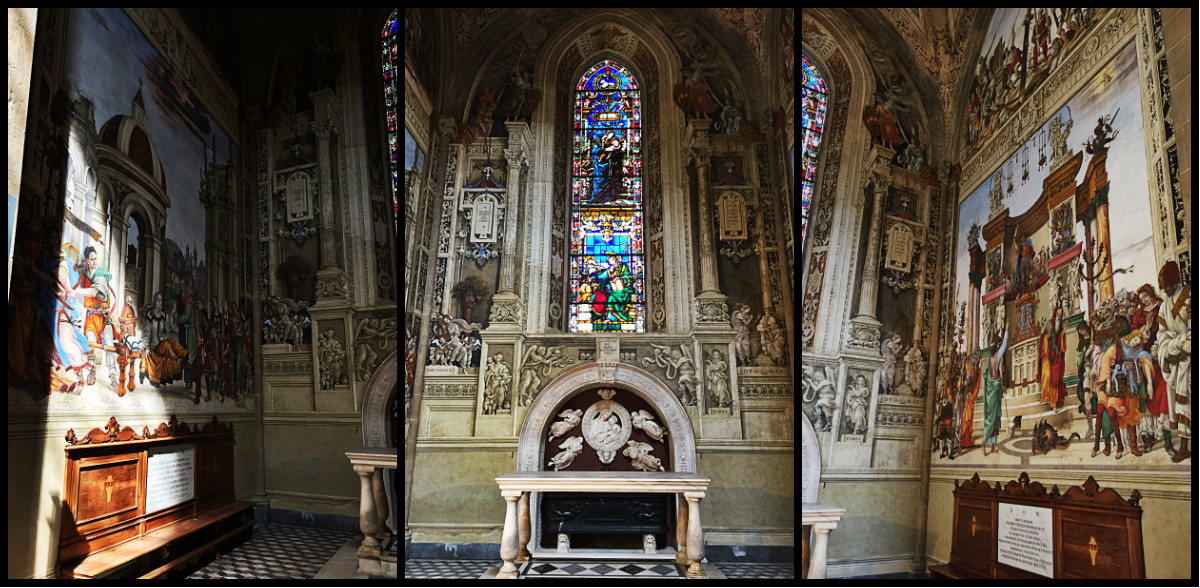
Cappella di Filippo Strozzi
Left wall:
- Martyrdom of St. John the Evangelist
- St. John the Evangelist resuscitates Drusiana
Back wall:
- Triumphal arch with female symbolic figures of Faith, Charity, and Angels
- Stained glass window: Virgin with Child and St. John the Evangelist and St. Phillip, by Filippino Lippi with Bernardo di Francesco and Iacopo di Francesco, 1492-1502
- Tomb of Filippo Strozzi by Benedetto da Maiano, 1491-1498
Right wall:
- Martyrdom of St. Philip the Apostle
- St. Philip the Apostle at the Temple of Mars in Hierapolis
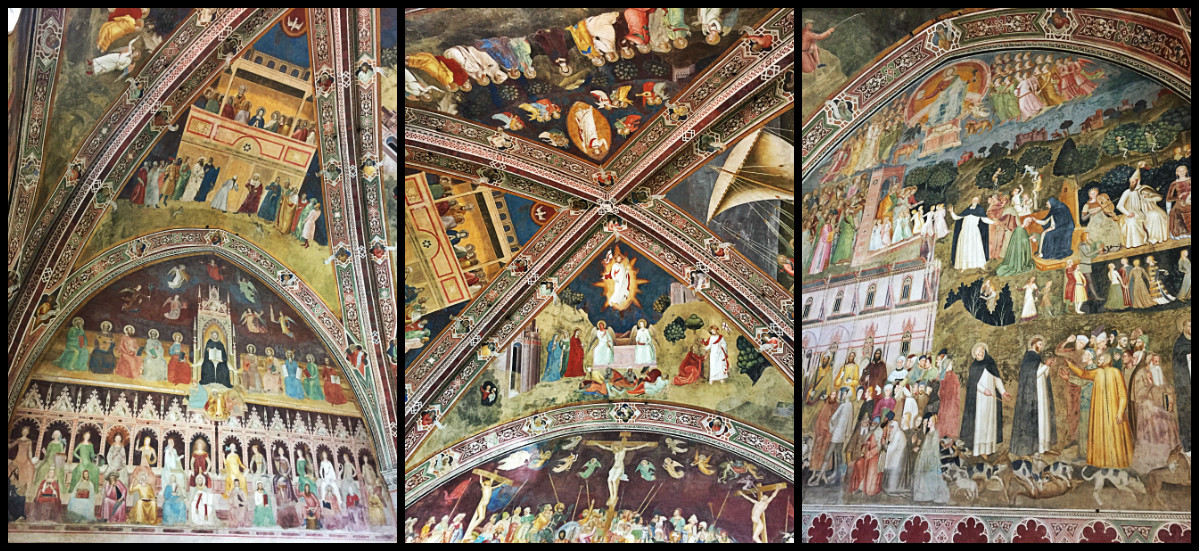
The Spanish Chapel (or Cappellone degli Spagnoli) is the former chapter house of the monastery. It was commissioned by Buonamico (Mico) Guidalotti as his funerary chapel. Construction started c. 1343 and was finished in 1355. The Guidalotti chapel was later called "Spanish Chapel" because Cosimo I assigned it to Eleonora of Toledo and her Spanish retinue. Within the Spanish Chapel, there is a smaller Chapel of the Most Holy Sacrament. The Spanish Chapel was decorated from 1365 to 1367 by Andrea di Bonaiuto, also known as Andrea da Firenze.
The large fresco on the right wall depicts an Allegory of the Active and Triumphant Church and of the Dominican order.
The frescoes on the other walls represent scenes from the lives of Christ and St Peter on the entry wall (mostly ruined due to the later installation of a choir), The Triumph of St Thomas Aquinas and the Allegory of Christian Learning on the left wall, and the large "Crucifixion with the Way to Calvary and the Descent into Limbo" on the archway of the altar wall.
Chiesa di Santa Maria Maggiore
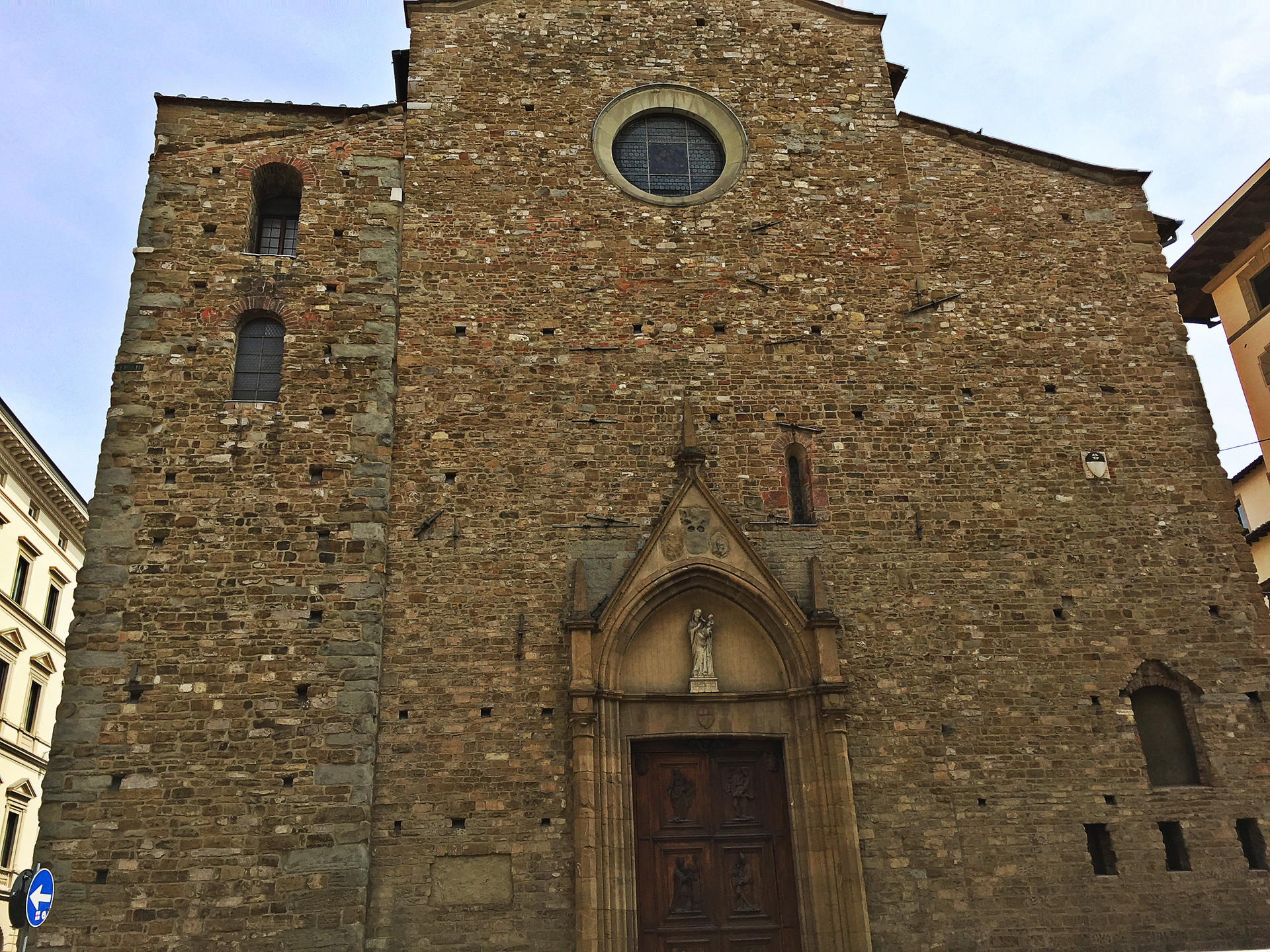
- this grandiose church is documented from 931 but already existed in VIIIth century
- having passed to the Cistercians, it was rebuilt in gothic style in the XIIIth century; the Cistercian structure is recognizable in the nave divided from the aisles by pointed arches springing from square piers, with three chapels at the east end
- of the Romanesque structure, there remains the truncated belfry, which has set into it a late-antique head known as "Berta"
- in the sanctuary are XIVth century frescoes showing "King Herod and the Massacre of the Innocents", attributed to Jacopo di Cione and Mariotto di Nardo
- in the chapel to the left of the choir is a "Madonna and Child", a XIIIth century work of art, a painted gilded wooden bas-relief attributed to Coppo da Marcovaldo, and a column from the tomb of Brunetto Latini, Dante's master
Piazza della Republica
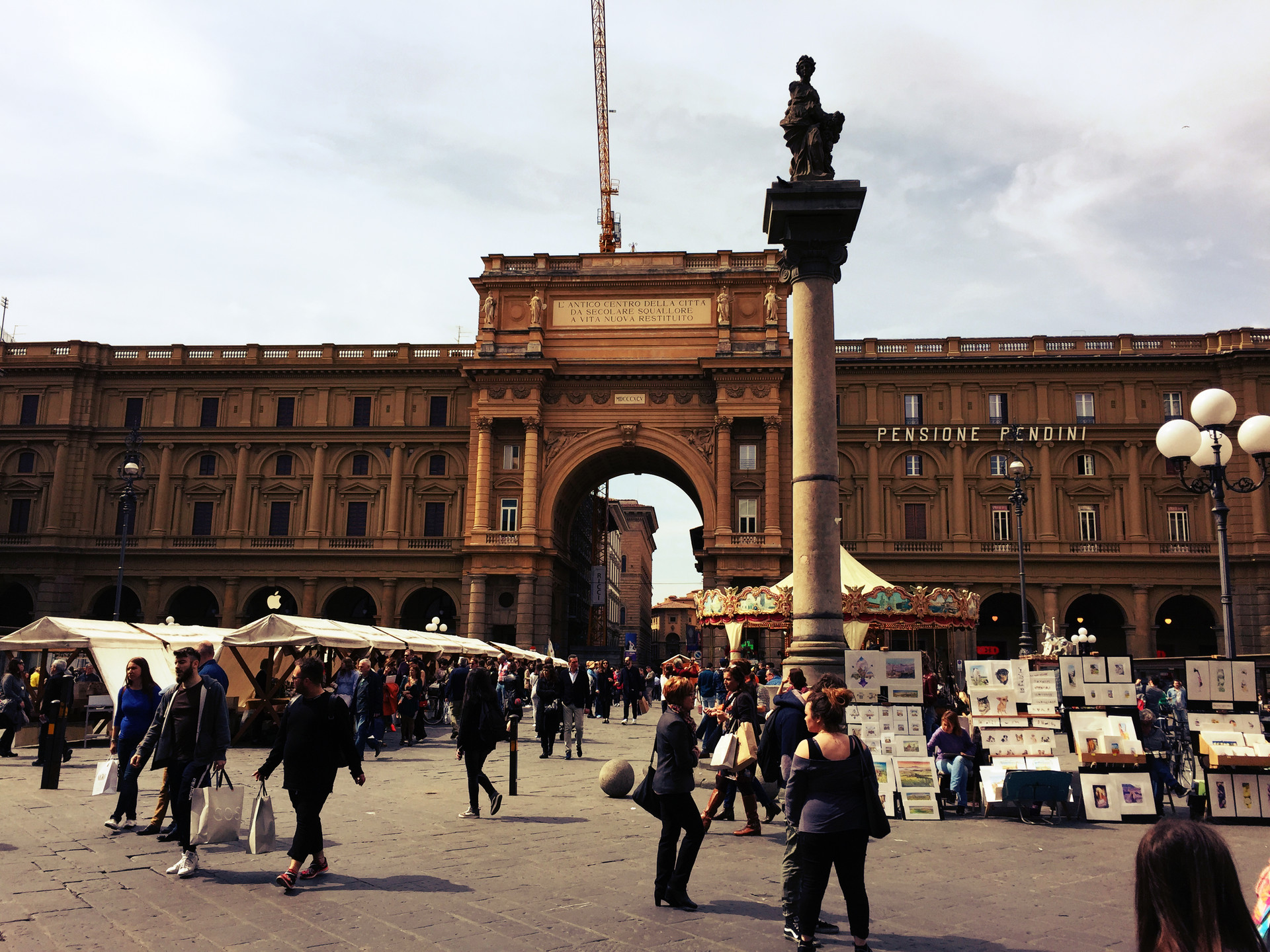
- It is on the site, first of the city's forum and then of the city's old ghetto, which was swept away during the city improvement works or Risanamento initiated during the brief period when Florence was the capital of a reunited Italy, work that also created the city's avenues and boulevards.
The porticos with the triumphal arch, called the "Arcone", was designed by Micheli and was inspired by the most courtly Florentine Renaissance architecture, even if its additions to that style seem to be distant from the true ancient style. The pompous inscription that dominates the square was dictated, it seems, from Isidoro del Lungo, or another literary source:
L'ANTICO CENTRO DELLA CITTÀ
DA SECOLARE SQUALLORE
A VITA NUOVA RESTITUITO
(The ancient center of the city / restored from age-old squalor / to new life)
Piazza del Duomo
Or the heart of the historic center of Florence can be proud of its title of "one of the most visited and known places in Europe" and the most visited area in the city of Florence.
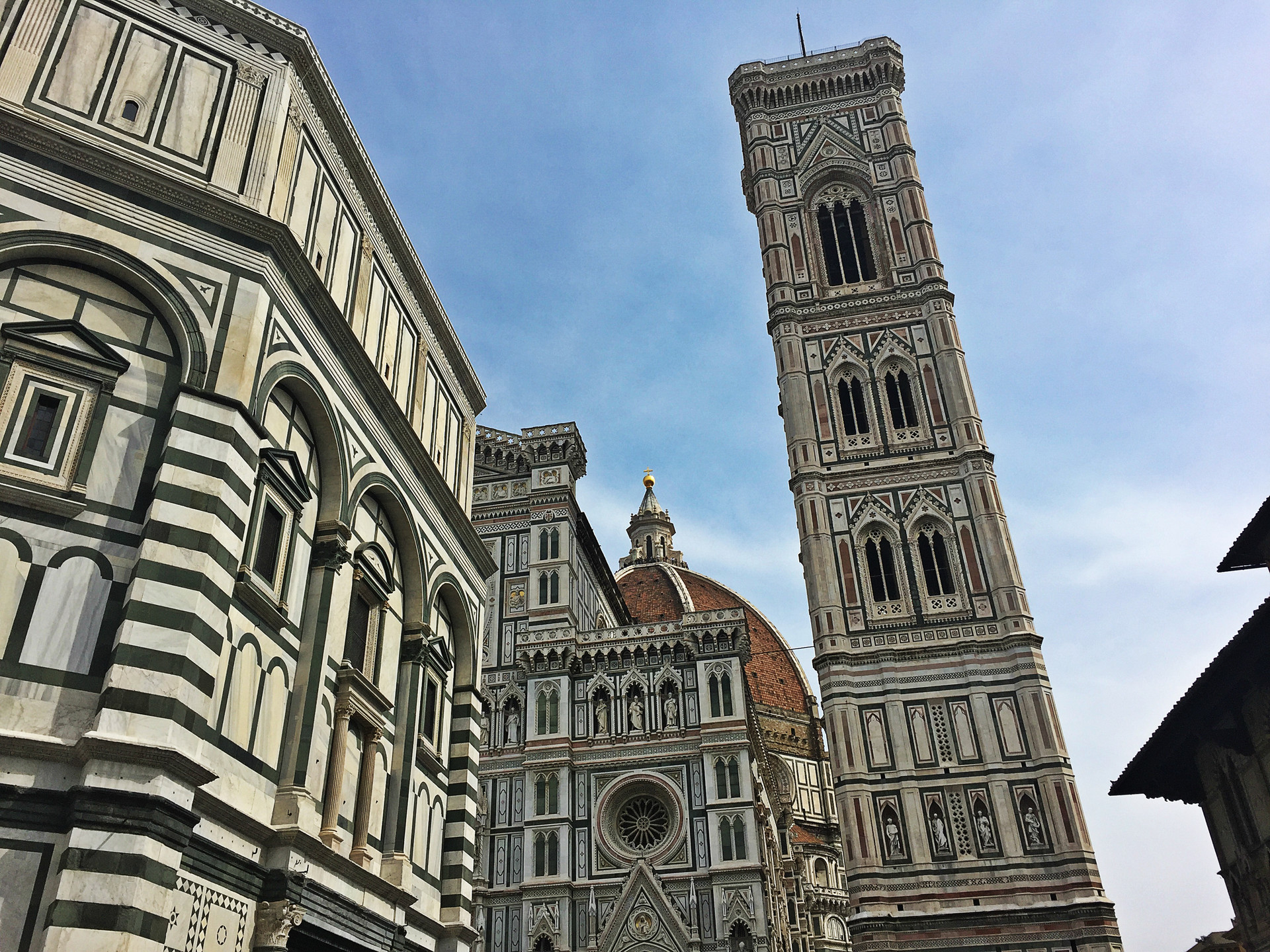
Giotto's Bell Tower
- Standing adjacent the Basilica of Santa Maria del Fiore and the Baptistery of St. John, the tower is one of the showpieces of the Florentine Gothic architecture with its design by Giotto, its rich sculptural decorations, and the polychrome marble encrustations.
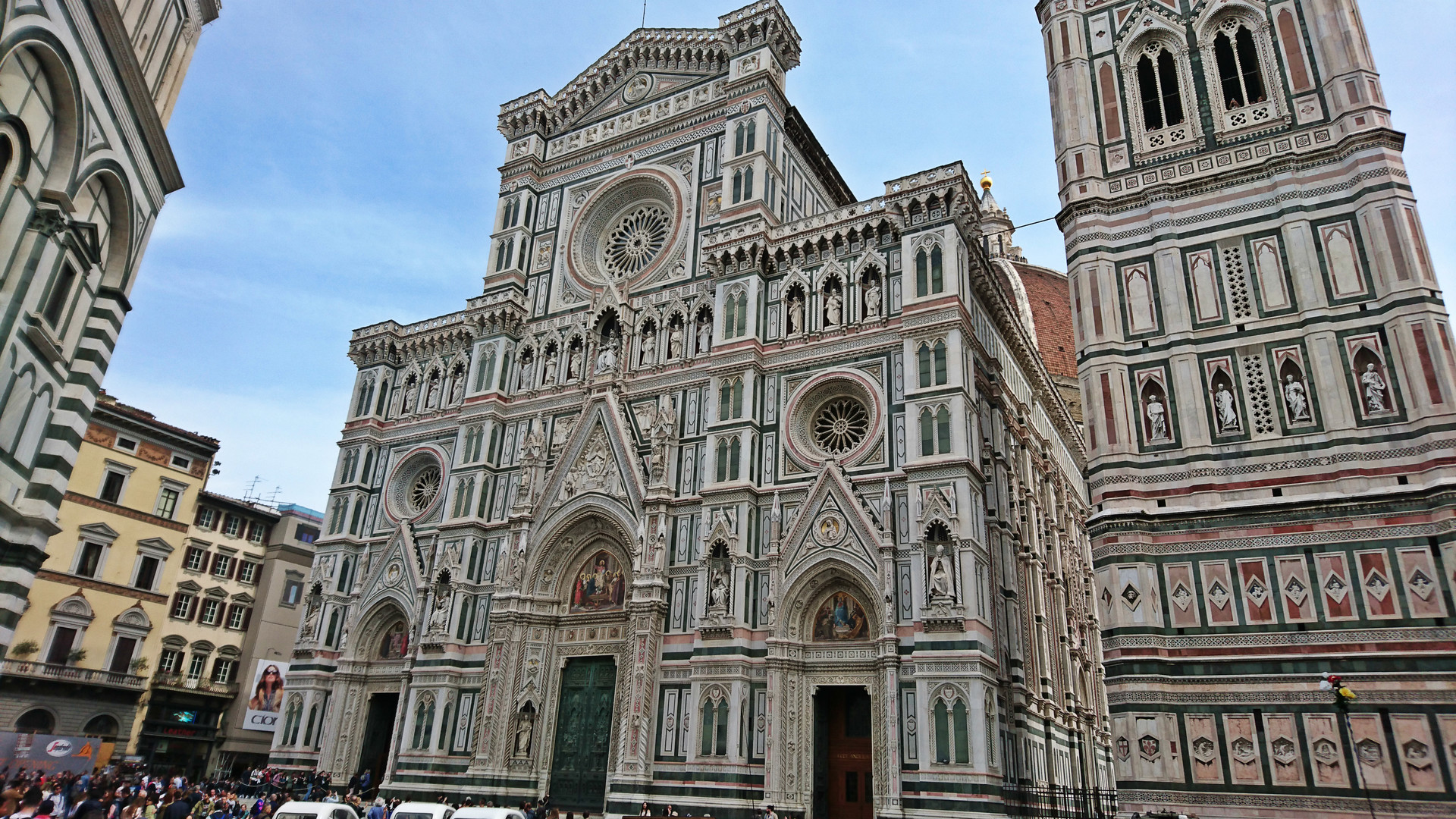
The square gathers the Florence Cathedral - with the Cupola del Brunelleschi - the Giotto's Campanile, the Florence Baptistery, the Loggia del Bigallo, the Opera del Duomo Museum, and the Arcivescovile and Canonici's Palace.
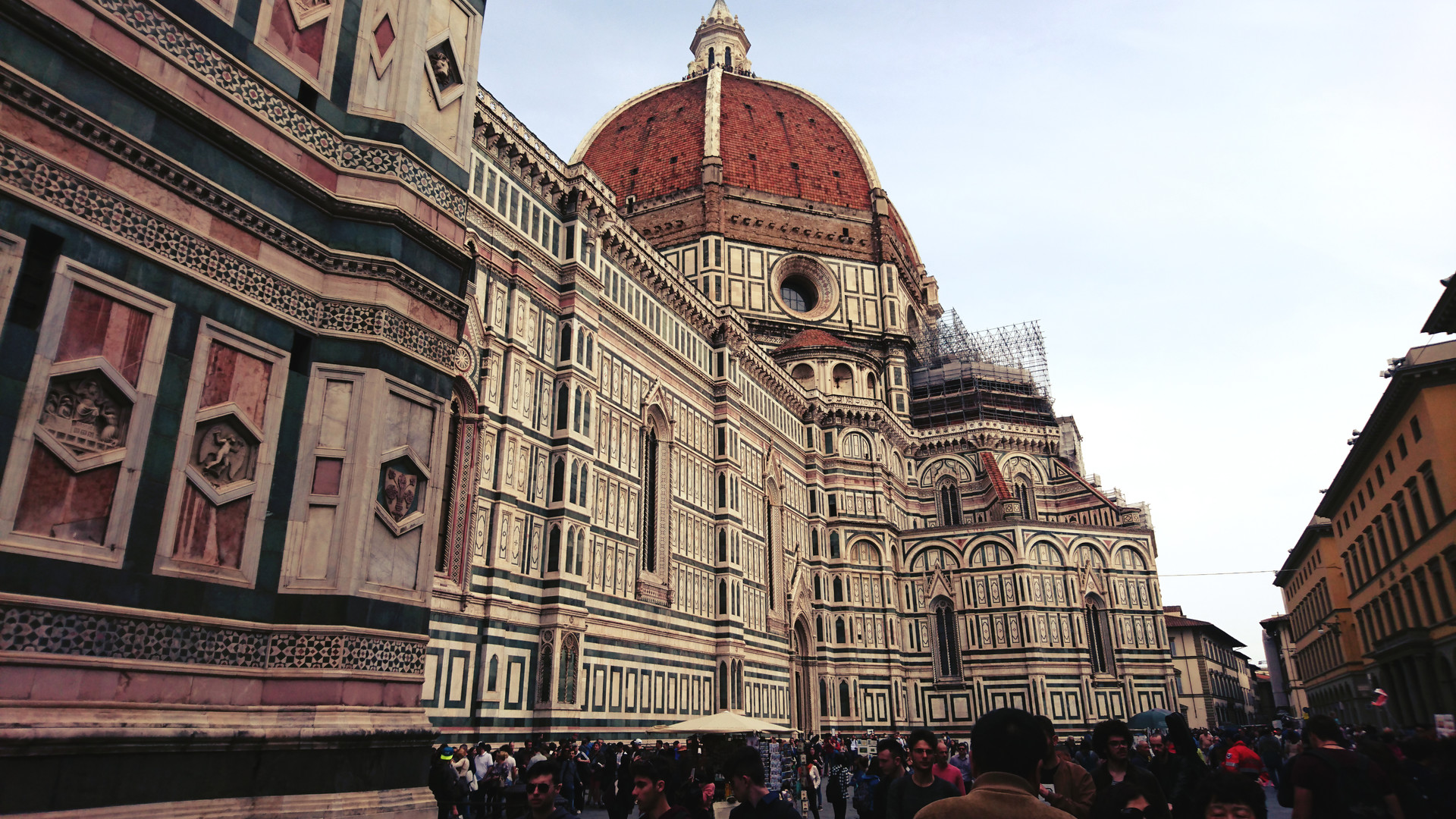
The largest building in medieval Europe is, indeed, the Santa Maria del Fiore Cathedral, being also the fourth church of Europe by size.
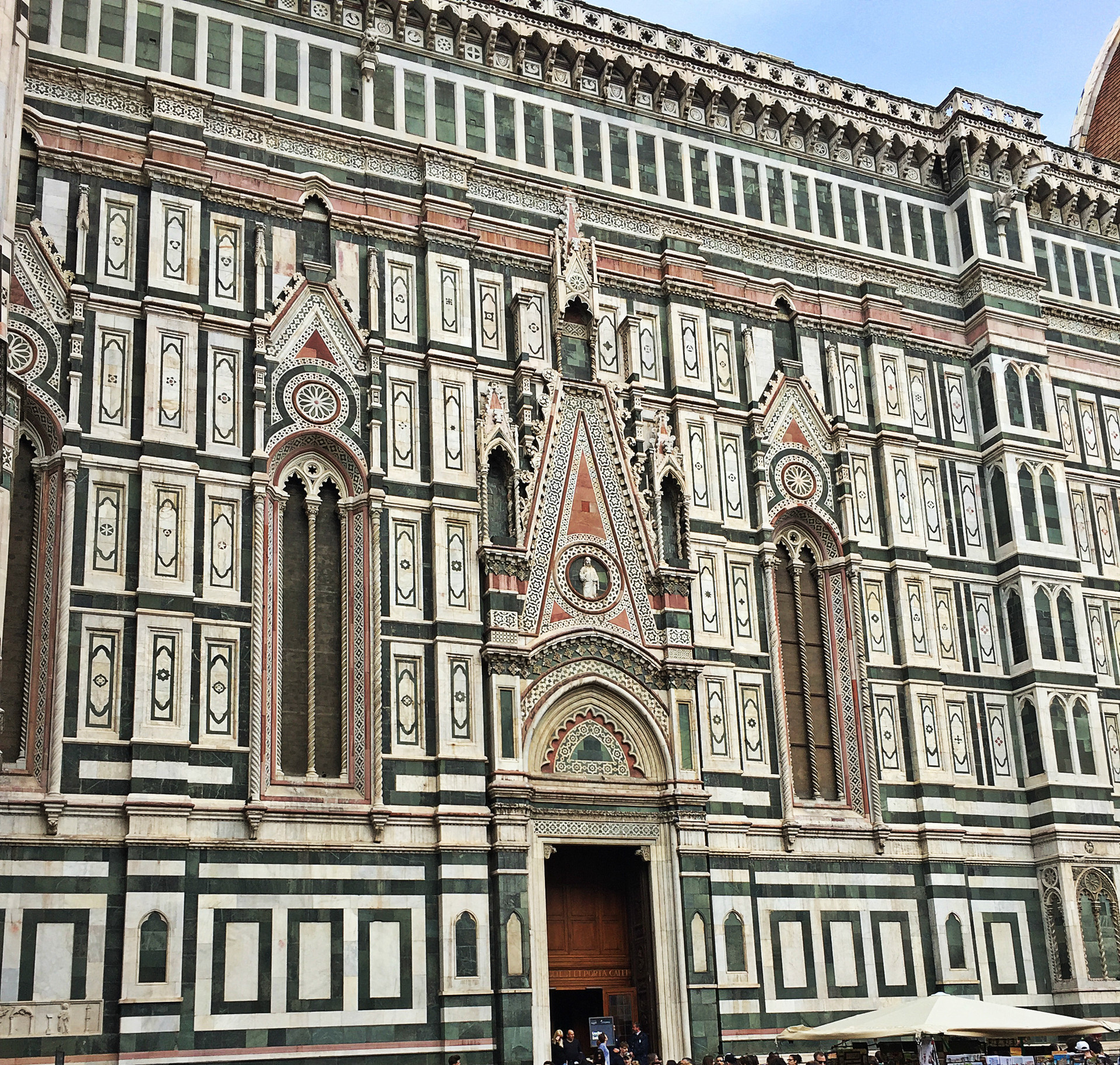
Palazzo Vecchio
Built at the turn between the XIIIth and XIVth centuries as the seat of the Priors, the oldest part of Palazzo Vecchio was originally designed by Arnolfo di Cambio - between 1245 and1302 -
The later additions of the XVth and above all of the 16th centuries changed the scale of the rear part of the palace, without however modifying the massive appearance of the huge blocks, projecting gallery and asymmetrical tower.

Various statues are lined up in front of the Palazzo Vecchio, including a copy of Michelangelo's David, that replaced the original in 1873, and the group of Hercules and Cacus by Bandinelli. On the facade, above the door, there is a medallion with the monogram of Christ between two lions in a blue field, surmounted by a gable. The inscription" Rex Regum et Dominus dominantium" was placed there in 1551 by order of Cosimo I, to replace the previous inscription, set there thirty years before.

The first entrance courtyard with white and gilded stucco work, redecorated with frescoes in the 16th century, owes its elegant structure to the second half of the 15th century. The courtyard opens on to the ancient Armoury now frequently used by the Town Council to organize exhibitions.
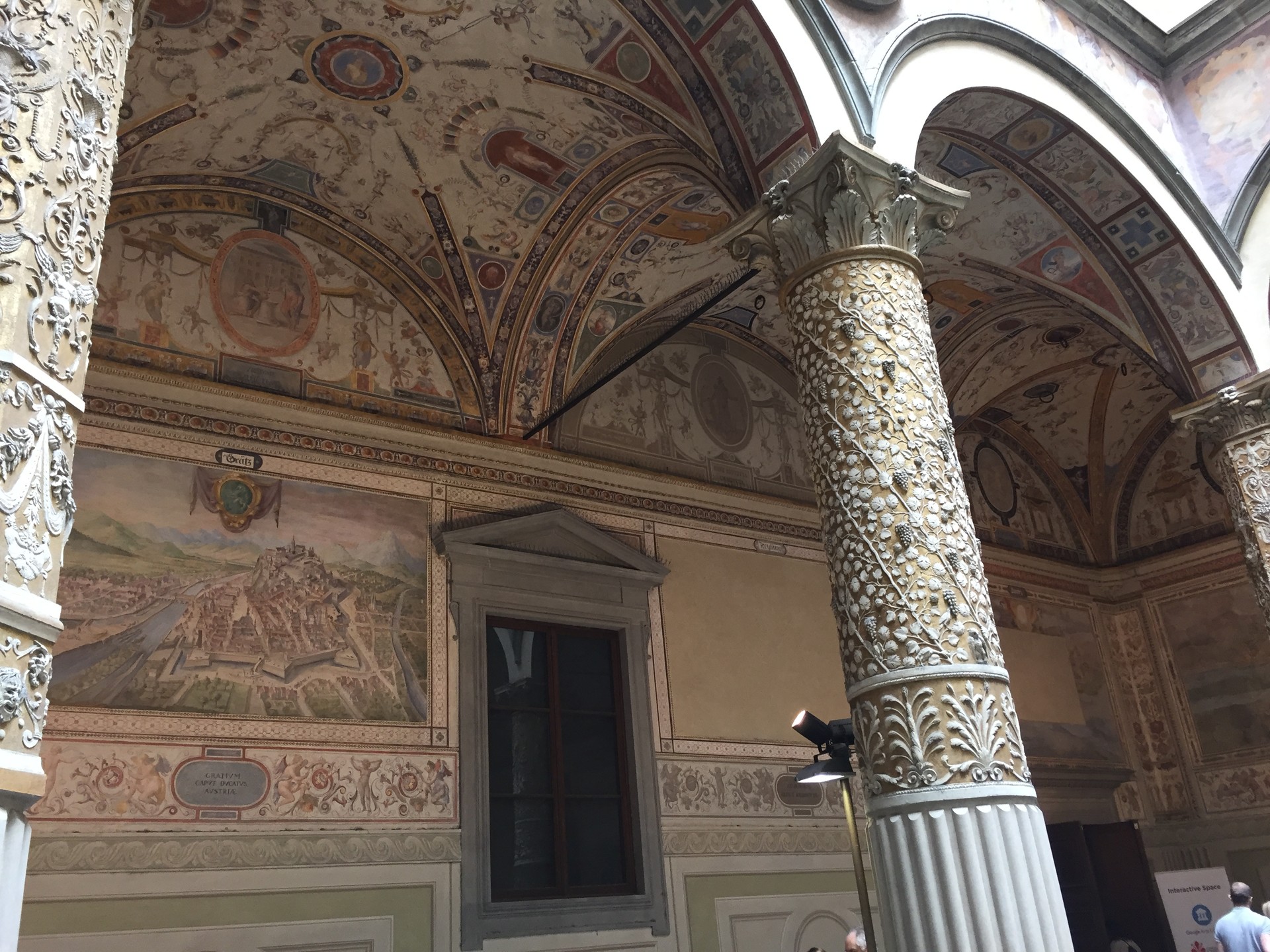
- Initially, the seat of the Signoria was provisionally used by the Grand Ducal family, then Cosimo I de Medici moved the residence to the newly built Palazzo Pitti.
- On the first floor, we find the grandiose Salone dei Cinquecento, a work by Cronaca (1495), which was used for the assemblies of the General Council of the People, after the State reforms brought about by Girolamo Savonarola.
- The walls of the hall, originally decorated by Michelangelo and Leonardo, owe their present-day monumental appearance to Vasari and his pupils and date back to the second half of the XVIth century.
- On the second floor, we find the "Quarter of the Elements" and the apartments of Eleonora da Toledo, the wife of Cosimo I.
Museo Galilei
- Also known by Palazzo Castellani is one of the oldest in the city. Erected in the XIth century as a castle in the walls of Florence, it was owned by various families over the centuries; and the last ones named the building for the rest of centuries.
- Since 1930 it has housed the Instituto e Museo di Storia della Scienza, today Museo Galileo.
- Inside, well, there are many collections, many explanations about every part of history exposed there, so that I won't show you everything but some parts to feed - maybe - your interest in this piece of history.
Because de' Medici were one of the most important noble families in Tuscany and the one who gave a specific shade to beautiful Florence, I will present some of their interests...
The Medici Wardrobe?! Yes, indeed.
Well. the Medicean collection of scientific instruments was begun by Cosimo I (1519-1574), who housed it in the Wardrobe of Palazzo Vecchio, known today as the "sala delle carte geografiche" or the maps room. The room was decorated between 1563 and 1581 by Egnazio Danti and Stefano Buonsigniori, who painted on the 57 doors of the wardrobes the geography of the known world. Against the end wall was the planetary clock by Lorenzo della Volpaia. According to the original project, two large globes, one terrestrial, the other celestial, were to hang from the ceiling.
Wanna measure the time? They did, using sundials.
The first chronometric instruments were based on the changing direction and length of the shadow cast by objects exposed to sunlight. The shadow of an indicator - called style or gnomon - falling on a set of hour lines shadowed the time.

Alternatively, the Sun's height above the horizon could be measured directly. Thanks to the mastery of projective geometry, by the XVIth century instrument makers were producing many different kinds of sundials - instruments that could be suspended from a hook, placed on shelves or mounted on walls, as well as pocket instruments. Some of these are still in use today!
- the cultural value of cosmography in Medici Tuscany is shown by the enthusiastic reception of Ptolemy's Geography - II century AD - one of the founding texts of the modern geographical studies rediscovered in Florence in the late XIVth century;
- a Cosmographic Room - containing representations of the Medicean domains and a great Ptolemaic model of the universe - was the ambitious project conceived by Cosimo I, later emulated by Ferdinando I in the Ufizzi Gallery
- four globes made by a Venetian cosmographer, Vincenzo Maria Coronelli, are still famous for their great size

How about understanding air?
The tendency to quantify chemical phenomena reached its apex near the end of the XVIIIth century when it was discovered that atmospheric air was not a simple element but was made up of numerous gases. To analyze air and determine its chemical nature, highly sophisticated instruments were needed.
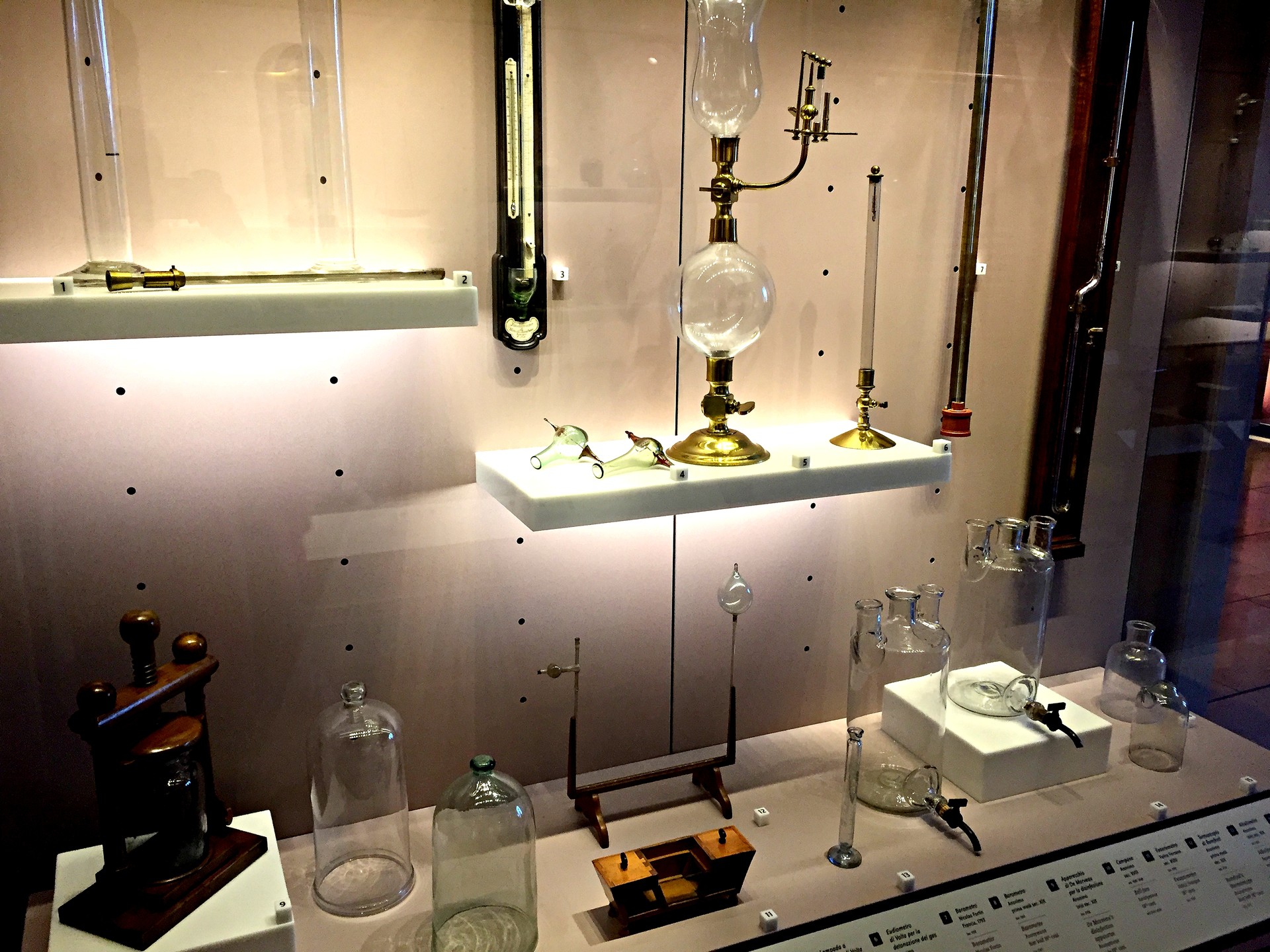
Some of these devices were designed for applications of public usefulness: eudiometers, that measured the purity of air, and Volta's electric pistol - in which hydrogen was exploded in the presence of oxygen, obtaining water - forerunner of the hydrogen lamp.
I want to end this piece of information with the man that gave the name of this spectacular museum - Galileo Galilei - and some words about his interests, his life, and concepts in life.
- he studied the nature and laws of motion throughout his scientific career, eventually formulating in the Discourses and mathematical demonstrations and entirely new dynamics, based on mathematical reasoning and innovative experiments
- in this groundbreaking work, the Aristotelian concept of motion is replaced by a vision founded on new principles: the acceleration of natural motion and its proportionality to time for rest, the conservation and composition of motion, the parabolic trajectory of projectiles, the infinite force of impact;
- for Galileo, the radical reform of Aristotelian dynamics opened the way to the definitive affirmation of the Copernican system
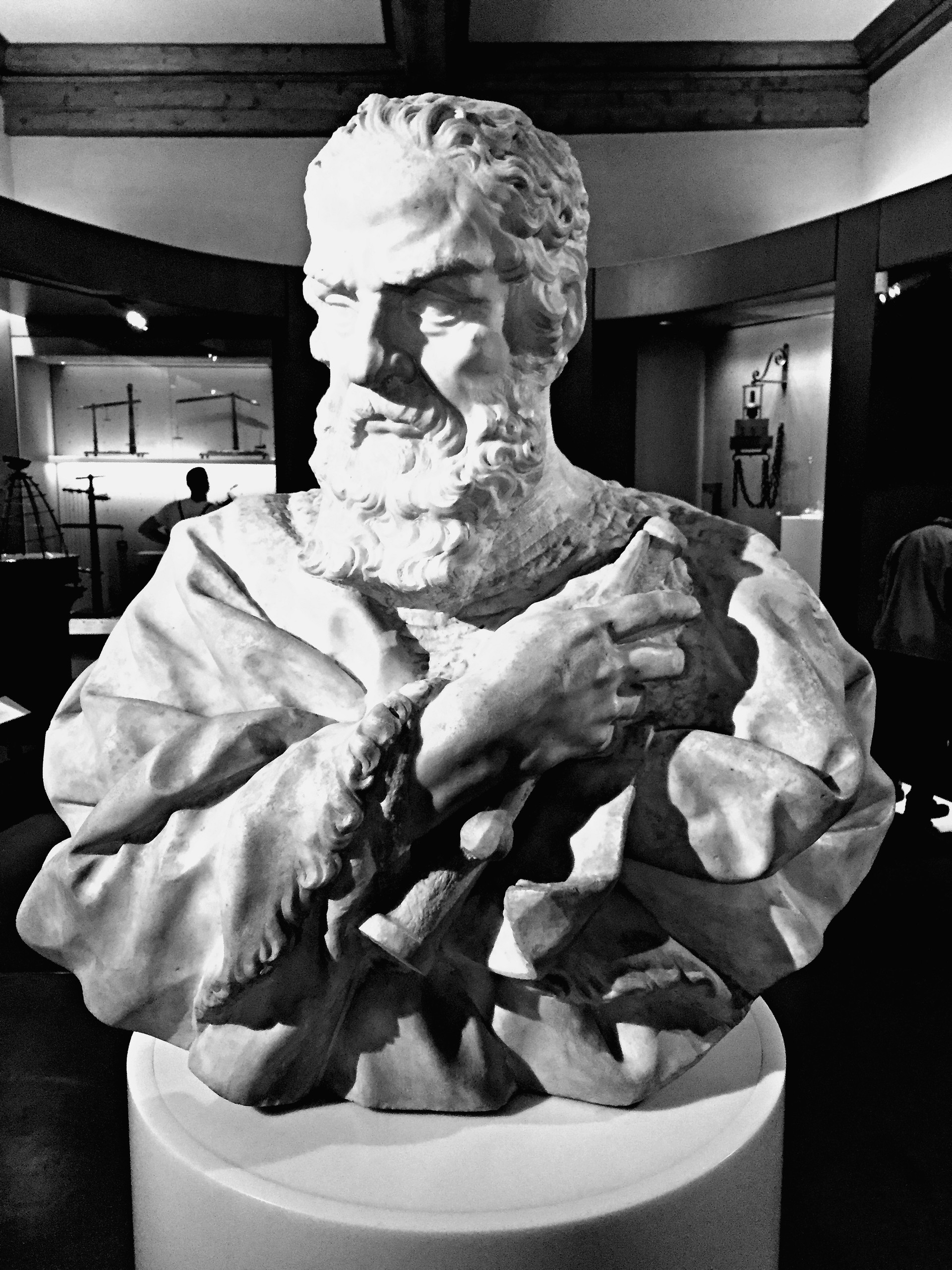
His bust was made by Carlo Marcellini between 1674 and 1677.
Photo gallery
Content available in other languages
- Español: Donde está mi corazón
Want to have your own Erasmus blog?
If you are experiencing living abroad, you're an avid traveller or want to promote the city where you live... create your own blog and share your adventures!
I want to create my Erasmus blog! →









































Comments (0 comments)